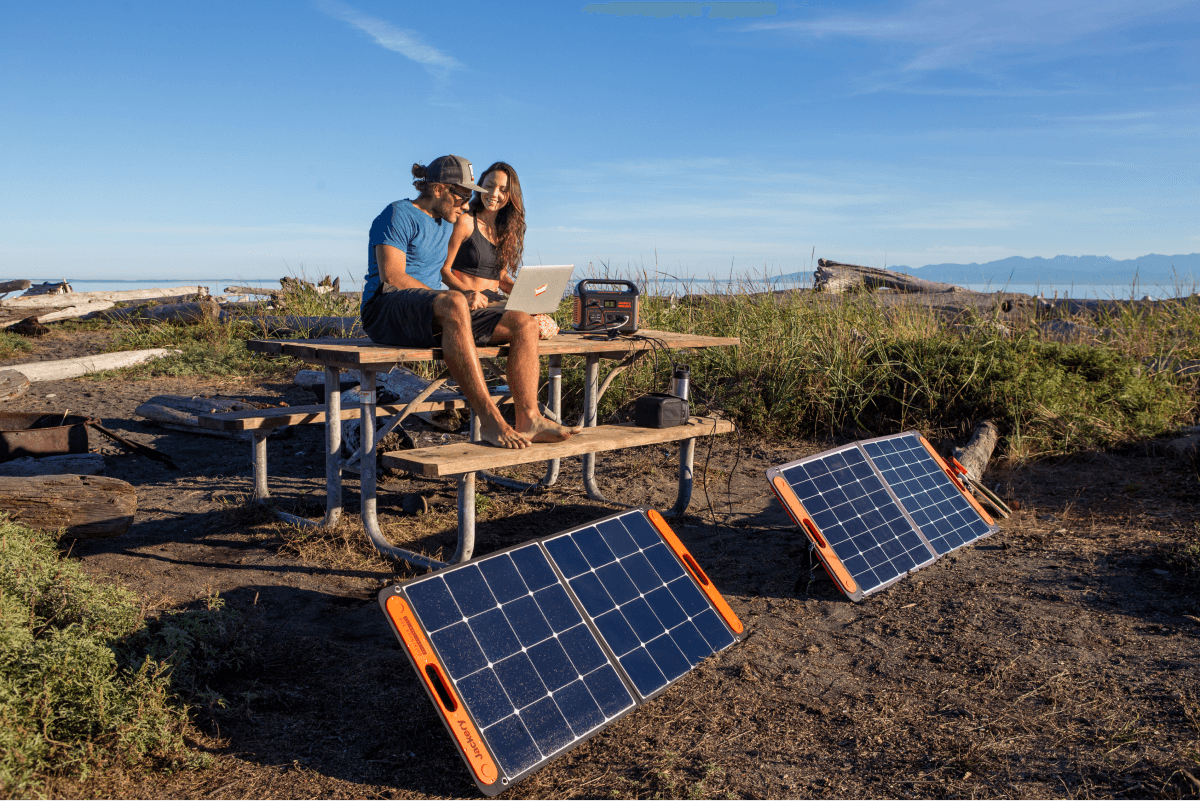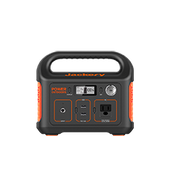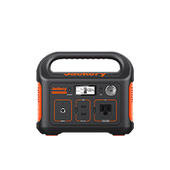A solar-powered laptop is an innovative technology that makes its power independent of AC outlets. Powerful batteries are attached to the laptop and connected to solar panels. These solar panels receive sunshine and convert their energy into electricity. When this solar-powered laptop is equipped with a satellite link GPS or any other wireless internet access, it becomes a fully independent workstation you can take anywhere without any network or power issues.
Solar-powered laptops may work in different mechanisms with solar panels attached to the computer or detachable solar batteries that can be charged with solar panels. So, you need to choose the best option according to your requirements.
What is A Solar Powered Laptop
Like any other solar-powered device, a laptop comprises solar panels, an inverter, and batteries. Solar panels are the most critical component of a solar computer because they receive sunlight and convert it into electricity.
A futuristic solar-powered laptop design uses photovoltaic cells embedded on the top of the notebook. These cells obtain energy from the sunlight and use it to power the laptop battery. However, it is important to consider the charging hours of the battery and whether it offers pass-through charging. Pass-through charging means the battery is charged, and the computer uses the energy simultaneously. We also need a cooling mechanism for the laptop because placing it in direct sunlight may adversely affect the hardware.
Solar Powered Laptop VS. Solar Generator for Laptop
|
Types |
Pros |
Cons |
|
Solar Powered Laptop |
1. No dependence on AC power outlets. 2. Use a laptop for a longer time without charging. |
1. High temperatures may damage hardware and battery. 2. Using a laptop in direct sunlight is essential for solar-powered laptops, which is challenging. |
|
Solar Generator for Laptop |
1. You can power your laptop with solar energy. 2. Cost-effective. 3. Low maintenance and noise free. 4. Eco friendly. 5. Safe and reliable. 6. Multiple ports for using many devices simultaneously. |
1. High temperature can be an issue. However, Jackery has overcome this issue with ventilation for the main equipment and temperature sensors. |
Solar-Powered Laptop
Solar-powered laptops are the latest technology that allows laptops to run directly with power harnessed from sunlight. 's power. The perspective behind this technology is to make an eco-friendly workstation that does not require plugging in and can be taken on the go. Though there have been many attempts, a lot remains to be desired in this regard.
Pros
- You do not have to rely on electrical outlets and you do not even need an expensive adapter to charge your laptop using the car plugins.
- It allows you to use your laptop for long stretches while using solar power while your laptop battery is also charging.
Cons
- Using a laptop in direct sunlight might be difficult because of the high temperature, and the screen is not clear and readable enough in bright sun.
- High temperatures can also harm your hardware. Lithium batteries are especially at risk.
- The weight of a laptop with solar panels can make it difficult to carry.
Solar Generator for Laptop
Solar-powered laptops have yet to prove very successful for the abovementioned reasons. The best alternative to these laptops is the solar generator, a broad-scope solution. You can use solar generators to power all your devices, including large appliances, refrigerator, TVs, air conditioners, etc.
A solar generator comprises portable solar panels, batteries, a charger, and an inverter. The solar panels receive the sunlight and convert it into electric power, which is saved in the batteries. So, you can use the power harnessed from the sun even when the sun is out. These generators are popular for camping, boating RVs, vans, and off-grid solutions.
Pros
- Solar generators are eco-friendly, noise-free, and very easy to use.
- No fossil fuel use.
- It is very economical as it does not need any fuel.
- Low maintenance because there are no moving parts.
- Solar power maximizes battery life as you can prevent repetitive deep discharges, which shorten the lifespan of lead-acid batteries.
Cons
- Very hot temperatures can expedite the degradation of batteries; however, the new technology used in quality brands like Jackery has made it possible to overcome this problem. Jackery uses better materials, cooling systems, and insulation to keep the batteries in good condition even after years of use.

How Many Watts Does A Laptop Use
Laptops use a varied amount of watts depending on the mode of function. When the laptop is in active working mode, it uses more watts, while sleep mode uses less. If we take the average wattage of a laptop, then it comes out to be approximately 65W.
On average, a typical laptop is used for 14.3 hours in Off mode, 0.3 hours in sleep mode, and 9.4 hours in Idle and high-performance modes. Then, we can summarize the usage below.
|
Mode |
Watt hours used per day |
Watts hours used per month |
Watts hours used per year |
|
Off mode |
4.88Wh |
148.4Wh |
1,780.4Wh |
|
Sleep mode |
0.23Wh |
7.1Wh |
85.2Wh |
|
Active mode (incl. high performance and active but idle modes) |
50.34Wh |
1,531.1Wh |
1,8373.2Wh |
|
Total |
55.45Wh |
1,686.6Wh |
20,238.8Wh |
How Much Does It Cost to Run A Laptop
The wattage of a laptop depends on the type of usage, size of a laptop, the brand and technology used, and the specification of the computer. The average wattage ranges from 30W to 200W if we take the electricity rate as 13¢ per KWH and the average laptop use of 8 hours daily.
|
Type |
Avg Watts |
Cost/hr |
Avg cost/month |
|
Macbook (13 inches) |
61 W |
0.8¢ |
$1.92 |
|
Macbook (15 inches) |
87 W |
1.13¢ |
$2.712 |
|
Other Laptops (15.6 inches) |
60 W |
0.78¢ |
$1.87 |
|
Other Laptops (17 inches) |
90 W |
1.17¢ |
$2.8 |
|
Gaming Laptops |
180 W |
2.34¢ |
$5.6 |
How Much Solar Power Does A Laptop Need
The solar power a laptop needs are also variable. Following is a review of the average wattage of laptops based on manufacturer. This is the maximum power consumed by the device; however, laptops always do not work at maximum power consumption.
|
Laptop |
Wattage |
|
MacBook Air |
30W |
|
MacBook Pro 13″ |
61W |
|
MacBook Pro 14″ |
67W |
|
MacBook Pro 16″ |
96W or 140W depending on the spec |
|
Microsoft Surface Laptop Go |
39W |
|
Samsung Galaxy Chromebook 2 |
45W |
|
Samsung Galaxy Book Go |
45W |
|
Samsung Chromebook 4+ |
45W |
|
Dell Inspiron 14″ |
65W |
|
Dell Inspiron 17″ |
90W |
|
Dell Inspiron 15 (7000) |
90W |
|
Dell Inspiron 15 (3000) |
45W |
|
Dell XPS 15 |
130W |
|
Dell G15 Gaming Laptop |
180W |
|
ASUS ROG Zephyrus15 |
200W |
|
HP Laptops |
45W to 150W, depending on the model |
|
Acer Laptops |
45W to 180W, depending on the model |
|
Lenovo Flex 3 |
45W |
|
Lenovo Chromebook 3 |
45W |
|
Lenovo Ideapad 3 |
65W |
|
Lenovo Yoga |
65W |
|
Laptop Types |
Watts |
Length of Time |
Daily Power Consumption |
|
Macbook (13 inches) |
61 W |
8 |
488 Wh |
|
Macbook (15 inches) |
87 W |
8 |
696 Wh |
|
Other Laptops (15.6 inches) |
60 W |
8 |
480 Wh |
|
Other Laptops (17 inches) |
90 W |
8 |
720 Wh |
|
Gaming Laptops |
180 W |
8 |
1440 Wh |
Jackery Solar Generator for Laptops
Jackery is a manufacturer of solar generators. They offer an extensive range of solar generators of varied wattages and budgets. As previously discussed, laptops could be more power-hungry, so even smaller solar generators can support them. So, let us see a few Jackery solar generators that can fulfill your workstation requirements.
Jackery Solar Generator 1000 Plus
Jackery Solar Generator 1000 Plus is a powerful solar generator that can support most of your off-grid or camping equipment. It can charge laptops, projectors, speakers, and even outdoor grills during camping or other outdoor adventures. It's also a great emergency power solution that can charge essential household appliances during power outages or blackouts.
Jackery Solar Generator 600 Plus
The Jackery Solar Generator 600 Plus is a lightweight, easy-to-carry, and reliable power station that you can conveniently take with you on trips. It has a sturdy handle and ergonomic design to ensure it can be carried to remote locations for charging the laptops. If you have a small workstation with no access to electricity, you can charge laptops, lights, smartphones, and fans with this solar generator.
Jackery Solar Generator 300 Plus
Jackery Solar Generator 300 Plus is a compact solar power solution that can easily power your laptop, camping lights, speakers, and other small equipment. It is important to note that Jackery solar generators have a display showing the operating voltage, battery charging, etc., to make use very easy. It can exactly fit in your backpack to ensure you can carry the power solution wherever you go.
Here is a brief overview of how long different Jackery generators can support your laptop. We have calculated the average time based on realistic power capacity keeping power loss in operation in perspective. So, we are taking only 85% of the capacity instead of 100%.
|
Series |
Capacity |
Ports |
Laptop Watts |
Working Hours |
|
Jackery Solar Generator 1000 Plus |
1264Wh |
AC Output (x3): 120V~60Hz, 2000W (4000W Peak) USB-A Output (x2): 18W Max, 5-5V⎓3A USB-C Output (x2): 100W Max, (5V, 9V, 12V, 15V, 20V up to 5A) Car Port (x1): 12V⎓10A |
61 W |
17.6 H |
|
87 W |
12.3 H |
|||
|
60 W |
17.9 H |
|||
|
90 W |
11.9 H |
|||
|
180 W |
5.9 H |
|||
|
Jackery Solar Generator 600 Plus |
632Wh |
AC Output (x2): 120V~ 60Hz, 6.67A USB-A Output (x1): 18W Max, 5-6V⎓3A, 6-9V⎓2A, 9-12V⎓1.5A Car Port (x1): 12V⎓10A Max USB-C1 Output: 30W Max, 5V⎓3A, 9V⎓3A, 12V⎓2.5A, 15V⎓2A, 20V⎓1.5A USB-C2 Output: 100W Max, 5V⎓3A, 9V⎓3A, 12V⎓3A, 15V⎓3A, 20V⎓5A |
61 W |
8.8 H |
|
87 W |
6.1 H |
|||
|
60 W |
8.9 H |
|||
|
90 W |
5.9 H |
|||
|
180 W |
2.9 H |
|||
|
Jackery Solar Generator 300 Plus |
288Wh |
AC Output (x1): 120V, 60Hz, 300W (600W Peak) USB-A Output (x1): 15W Max 5V⎓3A USB-C Output (x1): 15W Max 5V⎓3A USB-C Output (x2): 100W Max, 5V⎓3A (5V, 9V, 12V, 15V, 20V up to 5A) Car Port (x1): 12V⎓10A |
61 W |
4.0 H |
|
87 W |
2.8 H |
|||
|
60 W |
4.0 H |
|||
|
90 W |
2.7 H |
|||
|
180 W |
1.3 H |
Solar Powered Laptop FAQs
1. What size of solar generator do I need to power a laptop?
The average power requirement of laptops is in the range of 65 to 200 watts. So, you can support it with small Jackery solar generators like Jackery Solar Generator 600 Plus, Jackery Solar Generator 300 Plus, and Jackery Solar Generator 240 v2. You can calculate the working hours of all solar generators by yourself if you know the capacity of the generator and the watt requirement of your laptop.
For example, if we take Jackery Solar Generator 1000 Plus with a capacity of 1264Wh.
Working time = 1264Wh * 0.85 / operating wattage of your laptop.
As we discussed already, we take only 85% of the capacity to incorporate power loss during operation. Hence, multiplication with 0.85 in the above equation.
If your laptop needs 65 watts, then;
Working time = 1264Wh * 0.85 / 65 W = 16.5 hours.
2. What to consider when running a laptop on solar power?
The main factors that help you in choosing and running a laptop on solar power are;
- The wattage of your laptop.
- The safety of your equipment in case of fluctuation.
- The mechanism to use solar power, i.e., you are using a solar-powered laptop,solar-powered laptop charger, or a solar generator.
- The working hours of your laptop.
3. How many solar panels do I need to run my laptop?
It is important to know your laptop's power consumption to calculate the number of required solar panels. So, how many solar panels to power a laptop?
For most laptops, 2 to 3 Jackery solar panels with a capacity of 200 watts are good options. We recommend the Jackery solar panels because they offer the highest 23.7% efficiency. You can pair them with the Jackery solar generators to run your equipment and save solar power in batteries.
4. How to build a DIY solar laptop charger?
-
Acquire a portable solar panel system, depending on your requirements.
-
Choose a battery pack that is compatible with your laptop.
-
Connect your solar panel with the battery pack and then the battery pack to your laptop.
a. Connect the output/positive terminal of the solar panel system with the input/positive terminal of the battery pack.
b. Connect the output/negative terminal of the solar panel system with the negative input terminal of your battery pack.
-
Voila! Your solar laptop charger is ready.
Final Thoughts
Solar-powered laptops aim to harness solar power to power your laptop without needing AC outlet charging. However, some limitations include temperature control, using the laptop in sunlight, and battery safety. These limitations are the reasons why solar-powered laptops are not very popular. However, you can use solar power to run your computer safely using Jackery solar generators because they are cost-effective, safe, and reliable. Since they offer pass-through charging, you can run your laptop and charge your generator simultaneously. Also, they have temperature sensors, and the primary cells and inverters are equipped with an independent air duct design. These features make these generators very safe.





















































































































Leave a comment